 Multiple Choice Questions
Multiple Choice QuestionsWhich one of the following viruses cause acute gastrointestinal illness due to contamination of drinking water?
Norovirus
Poliovirus
Rotavirus
Filoviruses
Certain chemokines are known to suppress HIV infection whereas proinflammatory cytokines are known to enhance infection. In order to explain these findings, control and chemokine receptor knock-out animals were treated with pro-inflammatory cytokines followed by HIV administration and then infection was assessed periodically. Which one of the graphical representation given below best explain the experimental results.
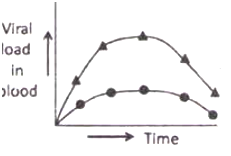
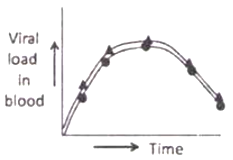


Of the following signaling processes, which one is NOT involved in cellular movement or cytoskeletal changes?

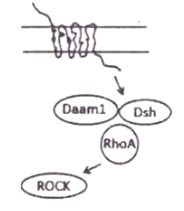
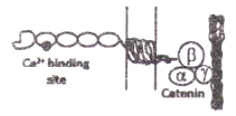
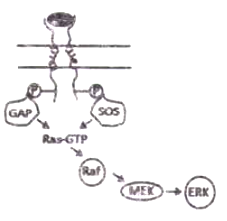
A patient with breast cancer was given a dose of radiation along with chemotherapy and was apparently cured of the tumor. After five years, a tumor was noticed in the patient's lungs, but the doctors confirmed that it was derived from cells of the mammary gland. the following possibilities were suggested by the doctor.
A. bacterial infection, after radiation, led to development of the tumors in the lungs.
B. Migration of residual chemo-resistant cells from the mammary gland resulted in tumors in the lungs.
C. Epithelial-to-mesenchymal transition had occurred in the lungs.
D. Cells in the lungs were induced to become a tumor after chemotherapy, and from factors secreted by mammary cells.
Which of the following is correct?
B and D
Only B
A and B
A and C
There are three substances A, B, and C. Given below are the pattern of immunological responses in rabbits when (i) A is administered along with C, (ii) B is administered along with C and (iii) A is conjugated with B and administered along with C.

Which one of the following is the correct identification?
A-protein; B-hapten; C-adjuvant
A-hapten; B-protein; C-adjuvant
A-protein; B-adjuvant; C-hapten
A-hapten; B-adjuvant; C-protein
In a confirmatory test for HIV, one or more viral antigens are detected in the blood of patients. Following are the steps to be performed for the experiment:
A. Transfer of viral antigens to nitrocellulose paper.
B. Incubation with the buffer containing antibodies specific for viral antigens.
C. Separation of viral antigens by SDS-PAGE.
D. Detection of bands by enzyme-linked secondary antibody.
Identify the correct sequence steps be performed for the experiment.
A-B-C-D
B-C-D-A
C-A-B-D
C-B-A-D
As cancer progresses, several genome rearrangements include translocation, deletion, duplications, etc,. occur. If these rearrangements are to be identified, which of the following techniques would be most suitable?
RAPD
Microarray
Multi-colour FISH
Flow cytometry
Following are certain statements regarding morphogen gradients and cell specification.
A. Morphogens are always transcription factors.
B. Morphogens can be paracrine factors that are produced in one group of cells and travel to another population of cells.
C. When the concentration of a morphogen drops below a certain threshold, cells stop differentiating and never get determined to another fate.
D. Morphogen gradients are involved in conditional specification.
Which combination of the above statements is true?
A and B
B and D
C and D
A and C
There are various subclasses of antibodies found in body fluids and body secretions. Many different functions ma be attributed to these subclasses. Given below in column I is major functions of different subclasses and column II consists of the name of the subclass.
| Column I | Column II |
| A. Binds to macrophages by Fc. | i. IgA |
| B. Binds to mast cells and basophils. | ii. IgD |
| C. First B cell receptor. | iii. IgE |
| D. No major specific function known, other than antigen binding. | iv. IgG |
| E. Protector of mucous membrane. | v. IgM |
Select the correct combination:
A - (i); B - (ii); C - (iii); D - (iv); E - (v)
A - (ii); B - (iii); C - (iv); D - (v); E - (i)
A - (iii); B - (iv); C - (v); D - (i); E - (ii)
A - (iv); B - (iii); C - (v); D - (ii); E - (i)
The relation between cellular immune response generated against the hepatitis C virus is the critical determinant of the outcome of infection. Given below are the representative figures of the cellular immune response in column I and various outcome of infection in column II.
| Column I | Column II |
A. 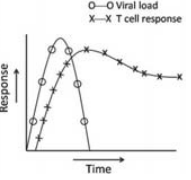 |
i. Acute |
B.  |
ii. Resolution |
C. 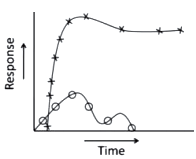 |
iii. Chronic |
Choose the best possible combination
A - (ii); B - (iii); C - (i)
A - (i); B - (iii); C - (ii)
A - (iii); B - (ii); C - (i)
A - (i); B - (ii); C - (iii)
